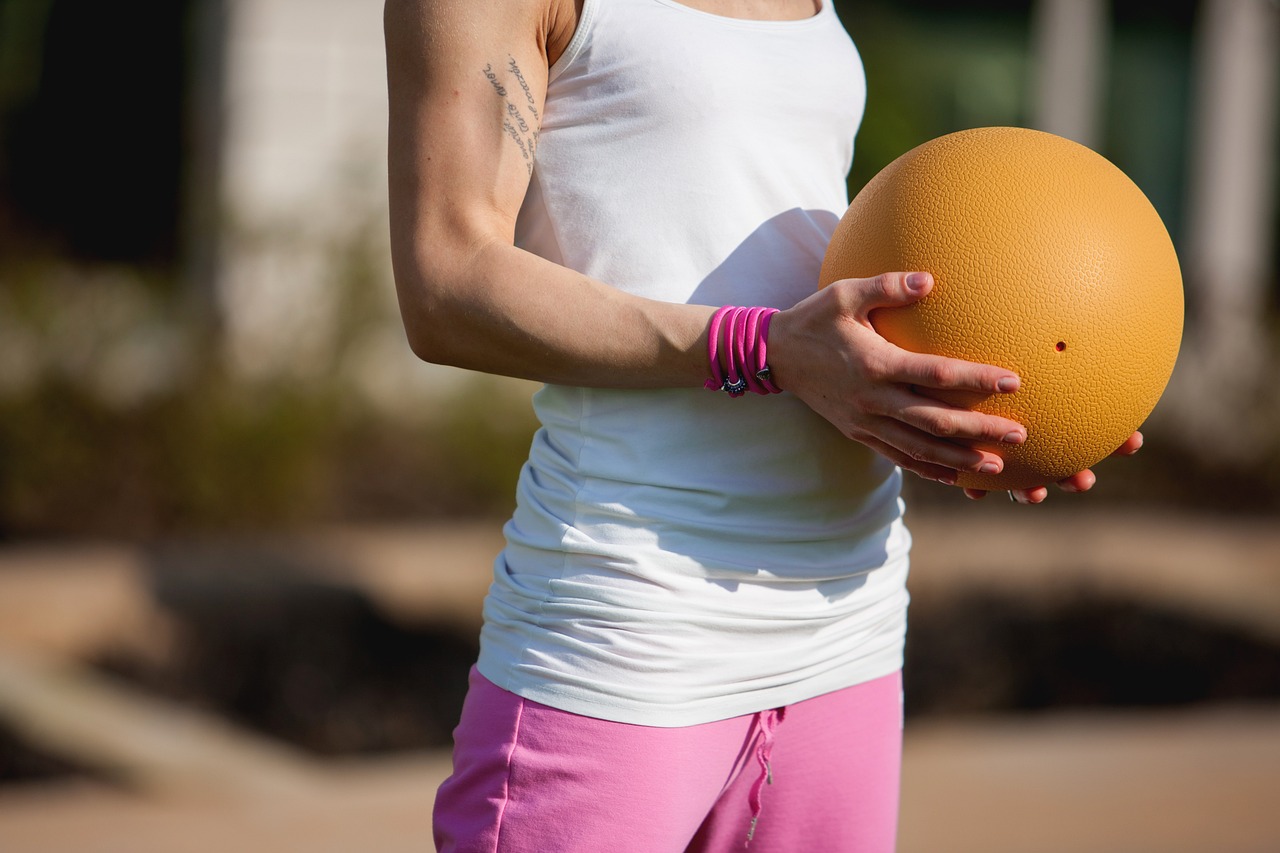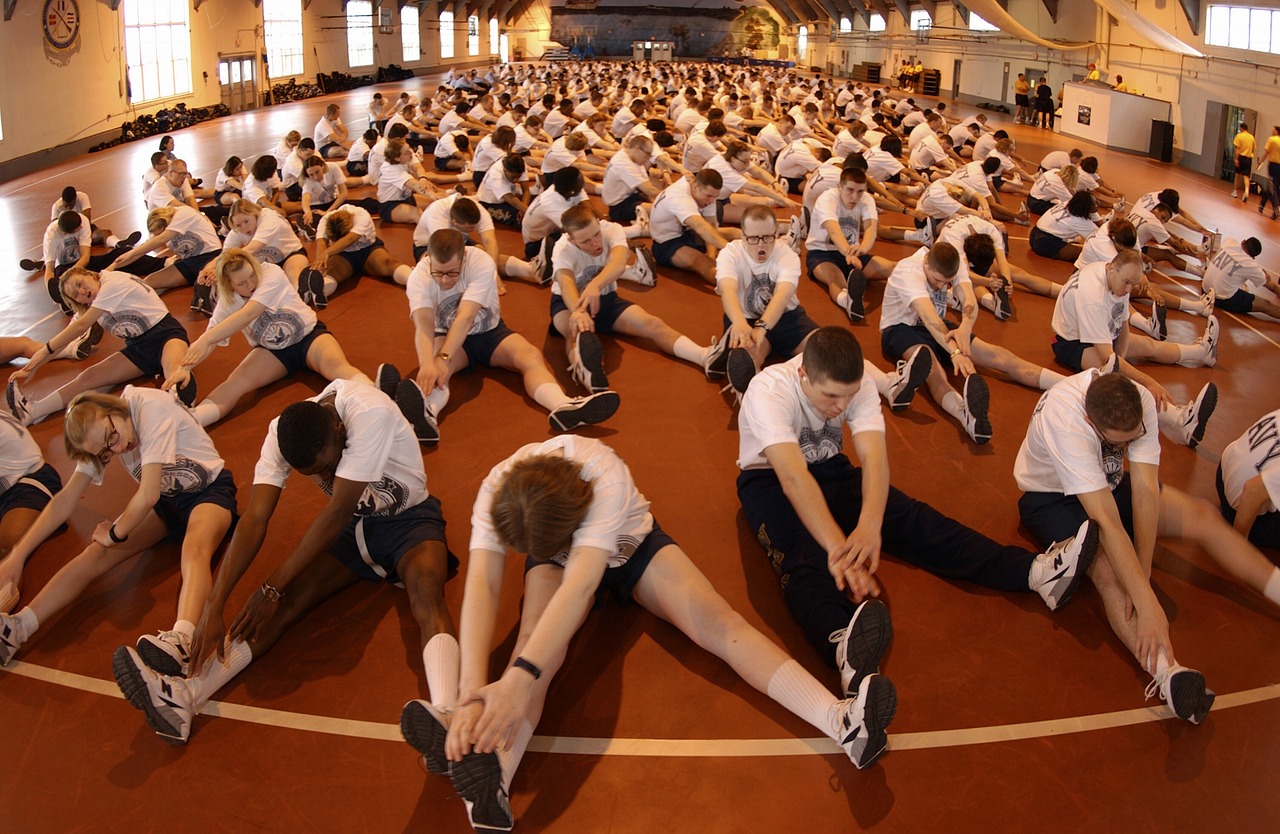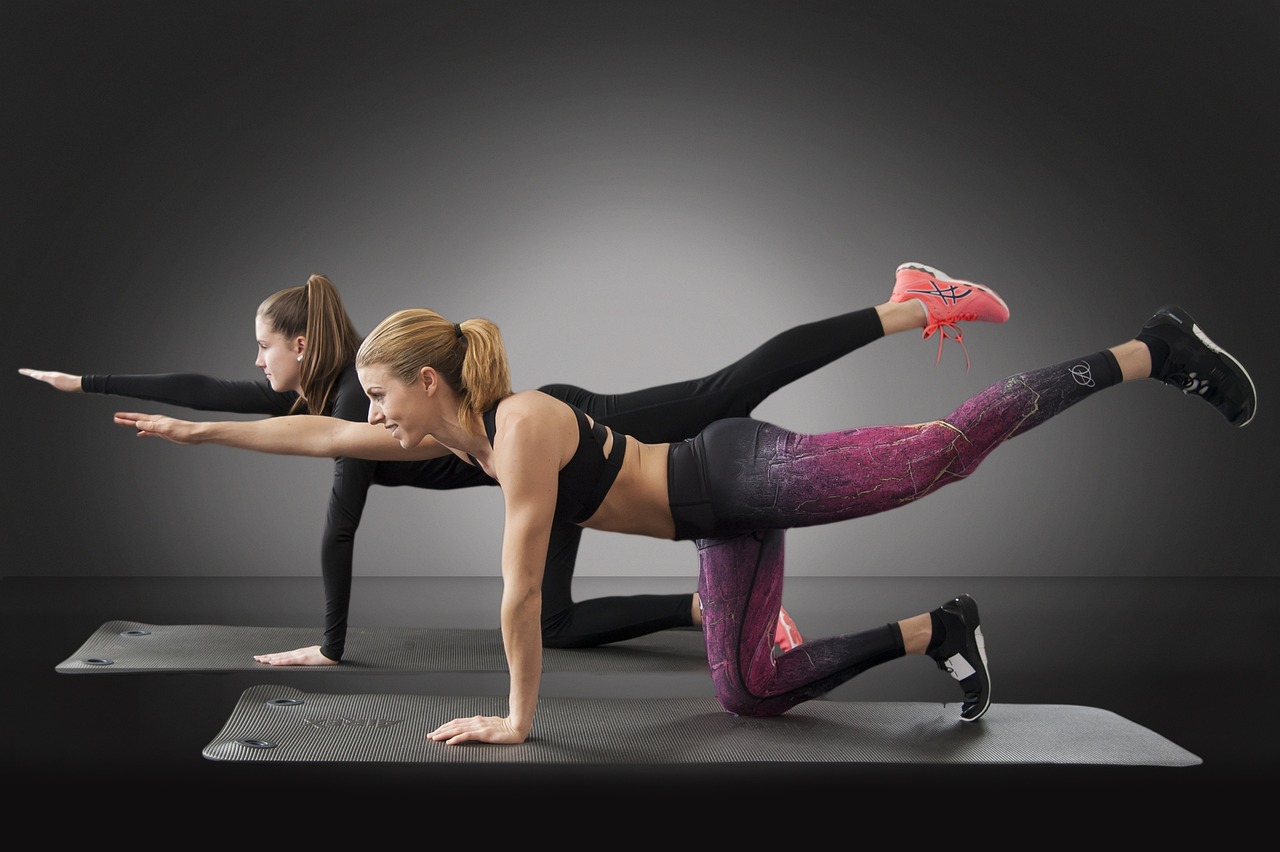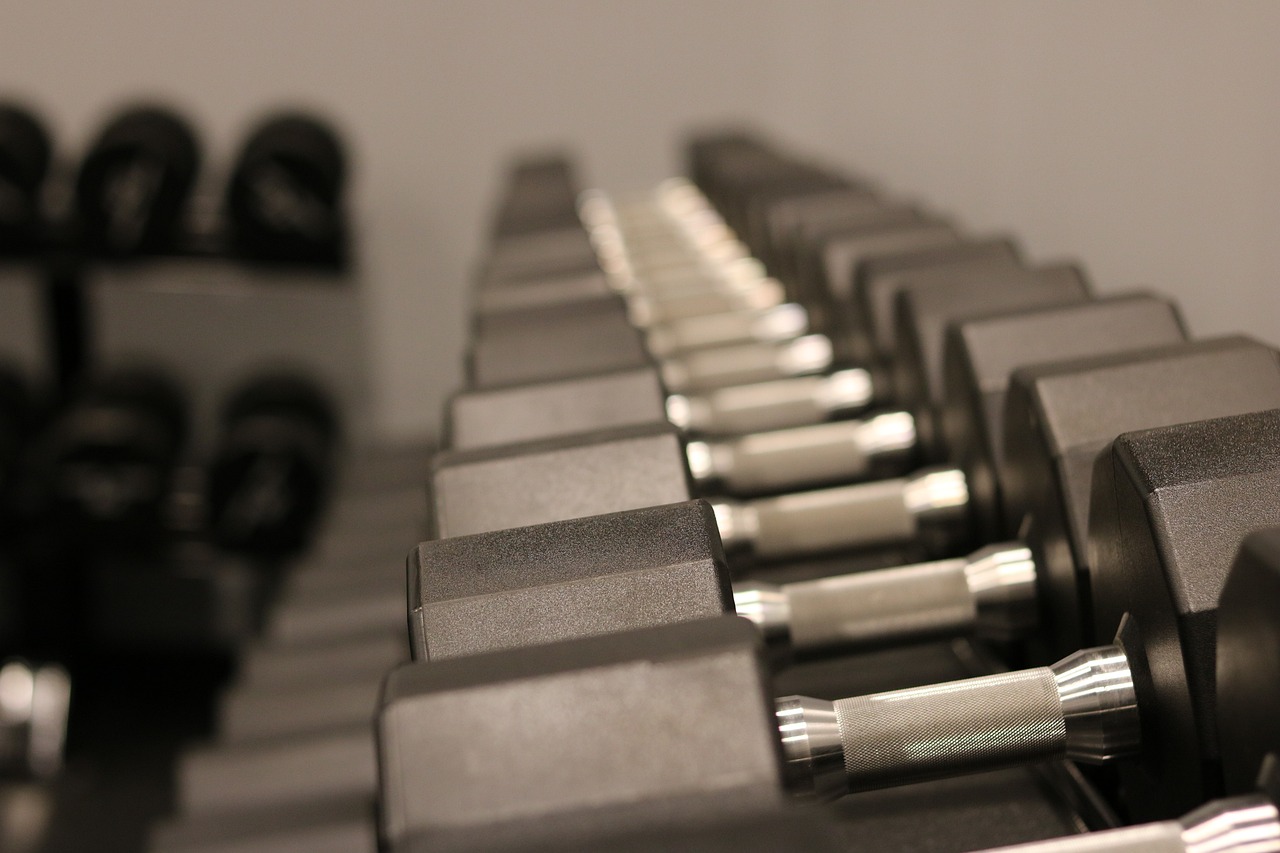Safety Guidelines for Cardio Workouts
When it comes to cardio workouts, safety should always be your top priority. Whether you're hitting the pavement for a run, cycling through the park, or sweating it out on a treadmill, understanding how to keep yourself safe can make all the difference between a successful workout and an injury. This article provides essential safety tips to ensure effective and injury-free cardio workouts. We'll cover warm-up routines, hydration, proper equipment, and the importance of listening to your body for optimal performance and safety.
Warming up is crucial for preparing your body for cardio workouts. Think of your muscles like a rubber band; if you try to stretch a cold rubber band, it might snap! Warming up increases blood flow to your muscles, enhances flexibility, and reduces the risk of injuries during those intense exercise sessions. A proper warm-up should include dynamic stretches and light aerobic activity to gradually increase your heart rate. Aim for at least 5-10 minutes of warming up to get your body ready to tackle the workout ahead.
Staying hydrated is vital for maintaining performance and preventing dehydration during cardio workouts. Just like a car needs fuel to run, your body needs water to function optimally. So, how much should you drink? Here’s a quick guideline:
| Time | Recommended Water Intake |
|---|---|
| Before Exercise | 16-20 oz (2-3 hours prior) |
| During Exercise | 7-10 oz every 10-20 minutes |
| After Exercise | 16-24 oz for every pound lost |
By following these guidelines, you can keep your body functioning at its best and avoid the pitfalls of dehydration.
Using appropriate gear can significantly impact your cardio workout experience. Have you ever tried running in shoes that felt like bricks? It’s not fun! Discover how to select the right shoes, clothing, and accessories to enhance comfort and reduce the risk of injuries. Look for shoes that offer good arch support and cushioning, and opt for moisture-wicking fabrics to keep you dry and comfortable. Remember, the right equipment can make your workout feel like a breeze rather than a chore.
Recognizing your body’s signals is essential for safe workouts. It’s like having an internal GPS guiding you through your fitness journey. Understand the signs of fatigue, pain, and overexertion to prevent injuries and ensure a balanced approach to your cardio routine. If you feel sharp pain or extreme fatigue, it’s okay to take a break. Your body knows what it needs, so listen to it!
Establishing achievable fitness goals helps maintain motivation and prevents burnout. Think of your goals as stepping stones on a path to success. Learn how to set realistic targets for your cardio workouts to ensure steady progress and long-term success. Instead of aiming to run a marathon next week, start with a goal of running for 10 minutes without stopping. Celebrate those small victories, and you’ll find yourself motivated to keep going!
Monitoring your heart rate during cardio workouts is important for optimizing performance. Explore the different heart rate zones and how to use them to tailor your workouts effectively. Here’s a quick breakdown of the zones:
- Resting Zone: 50-60% of max heart rate (light activity)
- Fat Burn Zone: 60-70% of max heart rate (moderate activity)
- Aerobic Zone: 70-80% of max heart rate (vigorous activity)
- Anaerobic Zone: 80-90% of max heart rate (high-intensity)
By knowing your heart rate zones, you can better tailor your workouts for specific fitness goals, whether it’s burning fat or building endurance.
Cooling down after cardio exercises aids recovery and flexibility. Think of it as giving your body a gentle hug after a tough workout. Discover effective cooling down techniques to help your body transition back to a resting state safely and efficiently. Spend 5-10 minutes doing light stretches and slow movements to gradually lower your heart rate and prevent stiffness.
Implementing injury prevention strategies is key to a sustainable cardio routine. Learn about common injuries and how to avoid them through proper technique, rest, and recovery practices. Always remember to mix in rest days to allow your body to recover and rebuild. It’s not just about pushing harder; it’s about working smarter!
Incorporating cross-training into your routine can enhance overall fitness and reduce the risk of overuse injuries. Think of cross-training as a buffet for your body—variety keeps things exciting and balanced. Understand the benefits of cross-training and how to effectively include it in your workout regimen. Activities like swimming, cycling, or strength training can complement your cardio workouts and keep you engaged.
Q: How often should I do cardio workouts?
A: Aim for at least 150 minutes of moderate aerobic activity or 75 minutes of vigorous activity each week, spread out over several days.
Q: What should I eat before a cardio workout?
A: A light snack that includes carbohydrates and protein, like a banana with peanut butter, can provide the energy you need.
Q: How can I tell if I'm overdoing it?
A: Signs of overexertion include extreme fatigue, dizziness, or persistent pain. If you experience these, it’s time to take a break.

Importance of Warm-Up
This article provides essential safety tips to ensure effective and injury-free cardio workouts. It covers warm-up routines, hydration, proper equipment, and listening to your body for optimal performance and safety.
Warming up is not just a boring prelude to your main workout; it’s a critical step that prepares your body for the physical challenges ahead. Think of it as the ignition for your engine—without it, you might stall or, worse, cause damage. When you engage in a proper warm-up, you’re effectively increasing blood flow to your muscles, enhancing flexibility, and reducing the risk of injuries during those intense exercise sessions. It’s like stretching a rubber band before you snap it; if you don’t, it might just break.
During a warm-up, your body undergoes several beneficial changes. Your heart rate gradually increases, pumping more oxygen-rich blood to your muscles. This process helps to raise your body temperature, which is crucial for improving muscle elasticity. Imagine trying to run a marathon with cold, stiff muscles—your performance would plummet, and the risk of injury would skyrocket. Therefore, a good warm-up routine typically includes dynamic stretches and low-intensity movements.
Here are some effective warm-up activities you can incorporate into your routine:
- Dynamic Stretches: Leg swings, arm circles, and torso twists help loosen up your joints.
- Light Cardio: A brisk walk or gentle jog for 5-10 minutes can elevate your heart rate.
- Mobility Exercises: Movements like lunges or high knees can prepare your body for more strenuous activities.
Not only does warming up physically prepare your body, but it also mentally gets you in the zone. It’s your opportunity to focus on your workout goals and set the right mindset. Think about it: how often do you jump into a task without mentally preparing? It’s the same with exercise. By dedicating a few minutes to warm-up, you’re not just preventing injuries; you’re also enhancing your overall performance.
In conclusion, never underestimate the power of a good warm-up. It’s a simple yet effective way to enhance your workout experience, improve your performance, and keep injuries at bay. So, the next time you’re gearing up for a cardio session, remember to give your body the warm-up it deserves!
Staying hydrated is vital for maintaining performance and preventing dehydration during cardio workouts. Learn how much water you should drink before, during, and after exercising to keep your body functioning optimally.
Using appropriate gear can significantly impact your cardio workout experience. Discover how to select the right shoes, clothing, and accessories to enhance comfort and reduce the risk of injuries.
Recognizing your body’s signals is essential for safe workouts. Understand the signs of fatigue, pain, and overexertion to prevent injuries and ensure a balanced approach to your cardio routine.
Establishing achievable fitness goals helps maintain motivation and prevents burnout. Learn how to set realistic targets for your cardio workouts to ensure steady progress and long-term success.
Monitoring your heart rate during cardio workouts is important for optimizing performance. Explore the different heart rate zones and how to use them to tailor your workouts effectively.
Cooling down after cardio exercises aids recovery and flexibility. Discover effective cooling down techniques to help your body transition back to a resting state safely and efficiently.
Implementing injury prevention strategies is key to a sustainable cardio routine. Learn about common injuries and how to avoid them through proper technique, rest, and recovery practices.
Incorporating cross-training into your routine can enhance overall fitness and reduce the risk of overuse injuries. Understand the benefits of cross-training and how to effectively include it in your workout regimen.
Q: How long should I warm up before a workout?
A: Aim for at least 5-10 minutes of warm-up activities to adequately prepare your body.
Q: What are the best warm-up exercises?
A: Dynamic stretches, light cardio, and mobility exercises are all excellent choices.
Q: Can I skip warming up if I'm short on time?
A: It’s not advisable to skip warming up, as it significantly reduces the risk of injury.
Q: How do I know if I’m hydrated enough?
A: A good indicator is the color of your urine; light yellow usually means you’re well-hydrated.

Hydration Essentials
Staying hydrated is not just a suggestion; it's a necessity for anyone engaging in cardio workouts. Imagine your body as a high-performance engine; without the right fuel, it simply won’t run smoothly. When you sweat during exercise, you’re not just losing water; you’re also losing essential electrolytes that keep your body functioning at its best. So, how much water should you really be drinking? The general rule of thumb is to consume at least 8-10 cups of water daily, but this can vary based on your activity level, climate, and individual needs.
Before you even lace up your sneakers, it's crucial to hydrate. Aim to drink about 16-20 ounces of water at least two hours before your workout. This pre-hydration will help ensure that your body is primed and ready for action. During your workout, you should sip on water every 15-20 minutes. This is especially important if you’re exercising for longer than an hour or in hot weather. A good rule of thumb is to drink approximately 7-10 ounces every 10-20 minutes of exercise.
After your workout, rehydration is equally important. Your body needs to replenish the fluids lost during your session. Aim to drink 16-24 ounces of water for every pound lost during exercise. To help you gauge your hydration needs, consider weighing yourself before and after your workout. If you notice a significant drop in weight, that’s a clear sign you need to increase your fluid intake!
But wait, there’s more! Sometimes plain water isn’t enough, especially after intense workouts. This is where electrolyte drinks come into play. These beverages can help restore the balance of electrolytes in your body. Look for drinks that contain sodium, potassium, and magnesium, as these are the key players in hydration. However, be cautious of added sugars and calories that can come with flavored drinks. Always read the labels!
In summary, hydration is an essential part of your cardio routine. To keep things simple, here’s a quick recap:
| Time | Recommended Water Intake |
|---|---|
| Before Workout | 16-20 ounces (2 hours before) |
| During Workout | 7-10 ounces every 10-20 minutes |
| After Workout | 16-24 ounces for every pound lost |
Remember, hydration is not just about drinking water; it's about listening to your body. If you feel thirsty, it’s already a sign that you need to hydrate. So, keep that water bottle handy, and make hydration a priority in your cardio workouts!
- How can I tell if I’m dehydrated? Look for signs like dark urine, fatigue, dizziness, or dry mouth. If you notice these symptoms, it’s time to drink up!
- Is it possible to drink too much water? Yes, overhydration can lead to a dangerous condition called hyponatremia. Balance is key!
- Can I hydrate with foods? Absolutely! Foods like watermelon, cucumbers, and oranges have high water content and can contribute to your hydration.

Choosing the Right Equipment
When it comes to cardio workouts, is like picking the perfect ingredients for a delicious recipe. If you want to whip up something fantastic, you need to start with the best components. In the world of fitness, your equipment can make or break your experience, impacting not only your performance but also your safety. So, let’s dive into the essentials that will help you gear up effectively!
First and foremost, let’s talk about footwear. Your shoes are your best friends during cardio workouts, and investing in a good pair can be a game-changer. Look for shoes that offer adequate cushioning and support for your specific activity, whether it's running, cycling, or any other form of cardio. A well-fitted shoe can help prevent blisters, calluses, and even serious injuries. You wouldn’t wear flip-flops to a marathon, right? Similarly, make sure your shoes are designed for the type of cardio you’re doing.
Next up is apparel. The clothes you wear can affect your performance and comfort levels significantly. Opt for breathable, moisture-wicking fabrics that allow your skin to breathe and keep you cool. Heavy cotton can lead to chafing and discomfort, especially during intense sessions. Think of your workout clothes as your armor; they should protect you and enhance your performance. Here’s a quick checklist of what to consider:
- Fit: Ensure your clothing isn’t too tight or too loose.
- Material: Choose synthetic fabrics that wick away sweat.
- Layering: Depending on the weather, consider layering for warmth or sun protection.
Now, let’s not forget about accessories. These can range from heart rate monitors to fitness trackers. These gadgets are like having a personal coach on your wrist, guiding you through your workout and helping you stay on track. A heart rate monitor, for example, can provide real-time feedback on your performance, ensuring you’re working within your optimal heart rate zone. This not only helps in maximizing your workout but also keeps you safe from overexertion.
Moreover, consider investing in hydration gear. Staying hydrated is crucial during cardio workouts, and having a reliable water bottle or hydration pack can make a significant difference. You wouldn’t drive a car without gas, so why would you head into a workout without proper hydration? Look for options that are easy to carry and allow for quick sips without interrupting your flow.
Lastly, let’s touch on home workout equipment. If you prefer to work out at home, having the right gear is equally important. Items like jump ropes, resistance bands, or even a good quality exercise mat can enhance your cardio sessions. Think of these tools as the spices that add flavor to your workout routine. They can elevate your sessions and keep things exciting!
In summary, choosing the right equipment for your cardio workouts is essential for both performance and safety. By investing in quality footwear, appropriate apparel, useful accessories, hydration gear, and home workout tools, you set yourself up for success. Remember, the right gear not only enhances your experience but also helps you reach your fitness goals more effectively!
Q: How do I know if my running shoes are the right fit?
A: Your running shoes should feel snug but not tight. You should have a thumb's width of space between your longest toe and the front of the shoe. Also, consider visiting a specialty running store for a professional fitting.
Q: What type of clothing is best for cardio workouts?
A: Look for moisture-wicking fabrics that allow sweat to evaporate, keeping you cool and comfortable. Avoid heavy cotton, which can trap moisture and lead to chafing.
Q: Are fitness trackers worth the investment?
A: Absolutely! Fitness trackers can provide valuable insights into your workouts, helping you monitor your heart rate, track your progress, and stay motivated.
Q: How much water should I drink during a workout?
A: Aim to drink 7-10 ounces of water every 10-20 minutes during your workout. Listen to your body, and adjust based on your level of exertion and the climate.

Listening to Your Body
When it comes to cardio workouts, one of the most important skills you can develop is the ability to listen to your body. Just like a finely tuned instrument, your body sends out signals that can help you understand its needs and limits. Ignoring these signals can lead to unnecessary injuries, fatigue, and burnout. So, how do you become more attuned to these messages? Let's break it down.
First and foremost, it's essential to recognize the difference between discomfort and pain. Discomfort is a normal part of pushing your limits, but pain is a warning sign that something might be wrong. If you feel a sharp or persistent pain, it's crucial to stop and assess the situation. This is your body’s way of saying, "Hey, slow down!" On the other hand, if you're feeling a bit of soreness or fatigue, it might just mean that you’ve had a good workout.
Another key aspect of listening to your body is understanding the signs of fatigue. Fatigue can manifest in various ways, such as:
- Decreased performance
- Increased heart rate during exercise
- Persistent muscle soreness
- Difficulty concentrating
If you notice any of these signs, it might be time to take a step back, allow your body to recover, and adjust your workout intensity. Remember, rest is just as important as exercise in achieving your fitness goals.
Moreover, hydration plays a significant role in how your body feels during workouts. Dehydration can lead to dizziness, cramps, and a general sense of fatigue. Make it a habit to drink water before, during, and after your workouts. A simple rule of thumb is to aim for at least 8 ounces of water every 20 minutes of exercise. This can help keep your energy levels up and your body functioning optimally.
It’s also beneficial to keep a workout journal where you can jot down how you feel during and after your sessions. This will not only help you track your progress but also identify patterns in your performance and recovery. Over time, you’ll be able to recognize what works best for you and when it’s time to push harder or take it easy.
Lastly, don’t hesitate to seek professional advice. If you're unsure about the signals your body is sending, consider consulting a fitness trainer or a healthcare professional. They can provide insights tailored to your specific situation and help you develop a safe and effective workout plan.
In summary, listening to your body is a crucial component of a successful and sustainable cardio routine. By being aware of your body's signals, you can prevent injuries, enhance your performance, and make the most out of your workouts. Remember, your body is your best coach—trust it!
Here are some common questions regarding listening to your body during cardio workouts:
| Question | Answer |
|---|---|
| What should I do if I feel pain during my workout? | Stop exercising immediately and assess the pain. If it persists, consider consulting a healthcare professional. |
| How can I tell if I'm dehydrated? | Common signs of dehydration include thirst, dry mouth, fatigue, and dark-colored urine. Make sure to drink water regularly. |
| Is it normal to feel sore after a workout? | Yes, some soreness is normal, especially if you are challenging your muscles. However, sharp pain is a cause for concern. |

Setting Realistic Goals
When it comes to achieving your fitness aspirations, is like having a roadmap for your cardio journey. Imagine trying to navigate through a dense forest without a map; it’s easy to get lost and frustrated. Similarly, without clear and achievable targets, your motivation can dwindle, and you might find yourself wandering off course. So, how do you create a roadmap that leads to success?
First, it’s important to understand that realistic goals are specific, measurable, attainable, relevant, and time-bound (SMART). This framework ensures that your objectives are not just lofty dreams but actionable steps that you can work towards. For example, instead of saying, “I want to get fit,” a more realistic goal would be, “I want to run a 5K in three months.” This goal is specific (running a 5K), measurable (you can track your progress), attainable (with training, it’s achievable), relevant (it aligns with your fitness aspirations), and time-bound (you have a deadline).
Moreover, breaking down larger goals into smaller, manageable milestones can make the process less daunting. Think of it as climbing a mountain; you wouldn’t try to reach the summit in one giant leap. Instead, you’d take it step by step, celebrating each milestone along the way. For instance, if your ultimate goal is to run 10 miles, start by aiming for one mile, then two, and gradually increase your distance. This strategy not only builds your endurance but also boosts your confidence as you achieve each small victory.
Another key aspect of setting realistic goals is to ensure they are aligned with your lifestyle. If you have a busy schedule, committing to an hour of cardio every day might be unrealistic. Instead, consider shorter, more intense workouts that fit into your day. For instance, high-intensity interval training (HIIT) can be a great way to maximize your workout in a limited time. This adaptability keeps you engaged and prevents feelings of overwhelm.
Additionally, it’s crucial to regularly evaluate and adjust your goals based on your progress and any changes in your circumstances. Life can be unpredictable, and it’s okay to modify your targets as needed. If you find that your initial goal was too ambitious, don’t hesitate to recalibrate. Remember, the journey of fitness is a marathon, not a sprint, and flexibility is key to long-term success.
Finally, consider sharing your goals with a friend or joining a community. Having a support system can provide encouragement and accountability, making it easier to stay on track. You might even find a workout buddy who shares similar goals, turning your fitness journey into a fun and social experience.
In summary, setting realistic goals is a vital component of a successful cardio workout routine. By being specific, breaking down larger objectives, aligning your goals with your lifestyle, regularly evaluating your progress, and seeking support, you’ll be well on your way to achieving your fitness aspirations. Remember, it’s not just about the destination but also enjoying the journey!
- How do I know if my goals are realistic? Consider your current fitness level, available time, and resources. Goals should challenge you but still be achievable.
- What if I don’t meet my goals? It’s okay! Use it as a learning experience to adjust your goals and strategies. Progress isn’t always linear.
- Can I set multiple goals at once? Yes, but it’s important to prioritize them to avoid feeling overwhelmed. Focus on one or two at a time for best results.

Understanding Heart Rate Zones
When it comes to cardio workouts, is like having a roadmap for your fitness journey. Just as a car needs to know its speed limits to drive safely, you need to monitor your heart rate to optimize your performance and ensure you're training effectively. Heart rate zones are essentially different ranges of heartbeats per minute (BPM) that correspond to varying levels of exercise intensity. By knowing these zones, you can tailor your workouts to meet your specific fitness goals.
There are typically five heart rate zones, each serving a unique purpose. Let's break them down:
| Heart Rate Zone | BPM Range | Purpose |
|---|---|---|
| Zone 1: Very Light | 50-60% of Max HR | Recovery and warm-up |
| Zone 2: Light | 60-70% of Max HR | Fat burning and endurance |
| Zone 3: Moderate | 70-80% of Max HR | Aerobic fitness improvement |
| Zone 4: Hard | 80-90% of Max HR | Increased performance and speed |
| Zone 5: Maximum | 90-100% of Max HR | Peak performance and power |
To find your maximum heart rate, a common formula is to subtract your age from 220. For example, if you're 30 years old, your estimated max heart rate would be 190 BPM (220 - 30 190). With this number in mind, you can easily identify your heart rate zones and adjust your workouts accordingly.
Now, you might be wondering why it's important to stay within these zones. Well, think of it like cooking. If you bake a cake at the right temperature, it rises perfectly; if it's too hot or too cold, it could end up a gooey mess or a dry disaster. Similarly, exercising in the correct heart rate zone ensures that you're maximizing fat burning, building endurance, or improving cardiovascular fitness without overexerting yourself.
For instance, if your goal is to lose weight, you might want to spend more time in Zone 2, where your body is efficiently burning fat. On the other hand, if you're training for a race, incorporating time in Zones 4 and 5 can significantly boost your speed and performance. The key is to listen to your body and adjust your workouts based on how you feel.
In conclusion, understanding heart rate zones is essential for anyone serious about their cardio workouts. By monitoring your heart rate and adjusting your intensity, you can achieve your fitness goals more effectively while minimizing the risk of injury. So the next time you lace up your sneakers, remember to check your heart rate and train smart!
- What is the best way to monitor my heart rate during workouts? You can use a heart rate monitor, fitness tracker, or even your smartphone to keep track of your BPM.
- How long should I stay in each heart rate zone? It depends on your goals, but generally, aim for 20-30 minutes in your target zone for optimal results.
- Can I train in multiple heart rate zones during a single workout? Absolutely! Many effective workouts incorporate intervals, allowing you to switch between different zones.

Cooling Down Techniques
Cooling down after your cardio workouts is just as important as warming up. It’s like giving your body a gentle hug after it has worked hard, helping it transition back to a resting state. When you finish a vigorous workout, your heart rate is elevated, and your muscles are pumped with blood. If you abruptly stop exercising, you may feel dizzy or light-headed due to the sudden drop in blood flow. This is why incorporating effective cooling down techniques is essential for your safety and recovery.
One of the most effective ways to cool down is to gradually decrease the intensity of your workout. For instance, if you’ve been running, slow down to a jog, and eventually walk for about 5 to 10 minutes. This helps your heart rate gradually return to its normal level and prevents blood from pooling in your legs. The key is to let your body ease back into a state of rest rather than hitting the brakes all at once.
Another crucial component of cooling down is stretching. After your muscles have been engaged in cardio activities, they are warm and more pliable. This is the perfect time to stretch, as it can enhance flexibility and reduce muscle soreness. Focus on major muscle groups that were used during your workout, such as:
- Quadriceps: Stand on one leg, grab your ankle, and pull it towards your glutes.
- Hamstrings: Sit on the ground and reach towards your toes, keeping your legs straight.
- Calves: Step one foot back and press the heel down while bending the front knee.
- Hip Flexors: Kneel on one knee and push your hips forward to stretch the front of your hip.
In addition to stretching, consider incorporating deep breathing exercises into your cooldown routine. Deep breathing helps lower your heart rate and promotes relaxation. Try inhaling deeply through your nose, holding for a few seconds, and exhaling slowly through your mouth. Repeat this process several times, allowing your body to feel more relaxed and at ease.
To further enhance your cooldown, you might want to hydrate with water or an electrolyte drink. This replenishes the fluids lost during your workout and helps your muscles recover. Remember, hydration is key, even after you’ve finished exercising!
Finally, if you want to take your cooldown to the next level, consider adding a few minutes of mindfulness or meditation. Find a quiet spot, sit comfortably, and focus on your breath or visualize a peaceful scene. This not only aids in physical recovery but also promotes mental well-being, making your workout experience holistic.
In summary, effective cooldown techniques are essential for optimizing recovery and preventing injuries. By gradually decreasing your intensity, stretching, practicing deep breathing, hydrating, and incorporating mindfulness, you can help your body transition smoothly from an active state to a restful one. Remember, your body deserves this gentle care after giving it your all!
Q: How long should my cooldown last?
A: Ideally, your cooldown should last about 5 to 10 minutes, allowing your heart rate to gradually return to normal and giving you time to stretch.
Q: Is it necessary to cool down if I’m short on time?
A: While it might be tempting to skip the cooldown when you're pressed for time, it’s crucial for recovery and injury prevention. Even a few minutes can be beneficial.
Q: Can I skip cooling down if I feel fine?
A: It’s still advisable to cool down even if you feel okay. Cooling down helps your body recover more effectively and can prevent soreness later on.
Q: What if I forget to cool down?
A: If you forget to cool down, don’t stress too much! Just make it a point to include it in your routine next time. Your body will thank you!

Injury Prevention Strategies
When it comes to cardio workouts, injury prevention should be at the forefront of your mind. After all, the last thing you want is to be sidelined by an injury that could have been avoided. Think of your body as a finely tuned machine; if one part isn’t functioning properly, it can throw everything off balance. To keep your engine running smoothly, consider implementing the following strategies into your routine.
First and foremost, proper technique is essential. Whether you're running, cycling, or engaging in high-intensity interval training (HIIT), using the correct form not only maximizes your performance but also minimizes the risk of injury. For instance, when running, ensure that your feet land under your hips to avoid unnecessary strain on your knees. If you’re unsure about your form, don’t hesitate to consult a trainer or watch instructional videos online.
Another critical aspect is to allow adequate rest and recovery. Just like any machine, your body needs time to cool down and repair itself after a workout. Overtraining can lead to fatigue and increase the likelihood of injuries. Aim for at least one rest day per week, and listen to your body; if you're feeling unusually sore or fatigued, it might be time to take a break. Remember, rest days are just as important as workout days!
In addition to rest, cross-training can be a game-changer in preventing injuries. By incorporating different types of workouts into your routine, such as swimming or strength training, you can reduce the risk of overuse injuries. This approach not only keeps your workouts fresh and exciting but also helps develop different muscle groups, enhancing your overall fitness. For instance, if you run three times a week, consider adding a day of cycling or yoga to balance things out.
Moreover, pay attention to your body’s signals. It’s crucial to recognize the difference between normal discomfort and pain that signals an injury. If you feel sharp pain or discomfort that persists, it’s essential to stop and assess the situation. Ignoring these signals can lead to more severe injuries down the line. Trust your instincts—if something feels off, it probably is.
Lastly, don’t underestimate the importance of proper gear. Wearing the right shoes for your specific activity can make a significant difference. Shoes that provide adequate support and cushioning can help absorb shock and reduce the impact on your joints. In fact, consider getting your gait analyzed at a specialty running store to find the best shoe for your foot type. Additionally, invest in moisture-wicking clothing to keep you comfortable and reduce the risk of chafing during your workouts.
To sum it all up, injury prevention is about being proactive rather than reactive. By focusing on proper technique, allowing for recovery, incorporating cross-training, listening to your body, and wearing the right gear, you can significantly reduce your risk of injury and enjoy a more effective cardio routine. Remember, your journey to fitness should be enjoyable and sustainable, so take the necessary precautions to keep yourself in top shape!
- What are the most common injuries associated with cardio workouts?
Common injuries include shin splints, runner's knee, and plantar fasciitis, all of which can be avoided with proper technique and recovery practices. - How can I tell if I'm overtraining?
Signs of overtraining include persistent fatigue, decreased performance, irritability, and increased susceptibility to injuries. - Is it necessary to cross-train?
While not strictly necessary, cross-training can enhance overall fitness and significantly lower the risk of overuse injuries.

The Role of Cross-Training
Cross-training is like the secret ingredient in your fitness recipe; it adds flavor, variety, and a whole lot of benefits! When you engage in different types of exercises outside your primary cardio routine, you’re not just mixing things up for fun. You’re actually enhancing your overall fitness and giving your body a well-rounded workout. Imagine your body as a car; if you only drive it on smooth highways, it may not perform well on rough terrain. Cross-training helps your body adapt to various challenges, making it stronger and more resilient.
One of the biggest advantages of cross-training is its ability to prevent overuse injuries. When you repeatedly perform the same movements, certain muscles can become overworked, leading to strain or injury. By incorporating different activities—like cycling, swimming, or strength training—you allow specific muscle groups to rest while still keeping your heart rate up. This not only helps in injury prevention but also enhances your performance in your primary cardio workouts.
Furthermore, cross-training can help improve your cardiovascular fitness and endurance. Different exercises challenge your heart and lungs in unique ways, which can lead to better overall fitness levels. For example, if you usually run, adding swimming to your routine can improve your lung capacity and breathing efficiency, which will benefit your running performance. It's like adding a turbo boost to your engine!
To get started with cross-training, consider the following tips:
- Mix It Up: Choose activities that complement your cardio workouts. If you run, try cycling or rowing. If you’re a swimmer, consider incorporating running or aerobics.
- Schedule It: Plan your cross-training sessions into your weekly routine. This ensures you stay committed and make it a regular part of your fitness journey.
- Listen to Your Body: Pay attention to how your body responds to new activities. If you feel pain or discomfort, it may be a sign to adjust your routine.
In addition to physical benefits, cross-training can also keep your workouts exciting and mentally stimulating. When you’re constantly trying new things, you’re less likely to get bored and more likely to stay motivated. You might discover a new passion for a sport or activity that you never considered before! Think of it as a treasure hunt for fitness—you never know what you might find!
In summary, the role of cross-training in your cardio routine is invaluable. It not only helps prevent injuries, enhances performance, and improves overall fitness, but it also keeps your workouts fresh and exciting. So, why not take the plunge? Start exploring different activities today, and watch your fitness soar!
- What are some good cross-training activities for runners?
Consider cycling, swimming, or strength training to build endurance and strength without the impact of running. - How often should I incorporate cross-training into my routine?
Ideally, aim for 1-3 cross-training sessions per week, depending on your fitness goals and schedule. - Can cross-training help with weight loss?
Yes! By varying your workouts, you can increase calorie burn and prevent plateaus in your weight loss journey.
Frequently Asked Questions
- Why is warming up important before cardio workouts?
Warming up is essential because it prepares your body for the physical demands of cardio exercise. It increases blood flow to your muscles, enhances flexibility, and significantly reduces the risk of injuries. Think of it as getting your engine running smoothly before hitting the road!
- How much water should I drink during my cardio sessions?
Staying hydrated is crucial! A good rule of thumb is to drink about 17-20 ounces of water 2-3 hours before exercising, and then 8 ounces about 20-30 minutes before your workout. During the workout, aim for 7-10 ounces every 10-20 minutes, and don’t forget to hydrate afterward, too!
- What type of shoes should I wear for cardio workouts?
Choosing the right shoes can make a world of difference! Look for shoes that provide good support, cushioning, and fit well. If you’re running, consider investing in a pair specifically designed for running, as they offer the right balance of comfort and stability.
- How do I know if I’m overexerting myself during a workout?
Listening to your body is key! Signs of overexertion include unusual fatigue, dizziness, shortness of breath, or persistent pain. If you feel any of these, it’s a signal to slow down or take a break. Remember, pushing too hard can lead to injuries!
- What are realistic goals for cardio workouts?
Setting realistic goals is all about finding your balance! Instead of aiming to run a marathon in a month, start with smaller, achievable targets like running for 10 minutes without stopping. This way, you’ll stay motivated and enjoy the journey towards your fitness aspirations.
- How can I monitor my heart rate during workouts?
Monitoring your heart rate is simple! You can use a heart rate monitor, fitness tracker, or even check your pulse manually. Understanding your heart rate zones helps you tailor your workouts for optimal performance, ensuring you’re training effectively and safely.
- What are some effective cooling down techniques?
Cooling down is just as important as warming up! Try light jogging or walking for 5-10 minutes post-workout to gradually lower your heart rate. Follow this with stretching exercises to enhance flexibility and aid recovery. Think of it as gently bringing your body back to a resting state.
- What are some common injuries in cardio workouts and how can I prevent them?
Common injuries include shin splints, runner’s knee, and ankle sprains. To prevent these, focus on proper technique, ensure you’re wearing the right gear, and take regular rest days. It’s all about listening to your body and giving it the care it needs!
- What is cross-training and why should I include it in my routine?
Cross-training involves mixing different types of workouts to enhance overall fitness and reduce the risk of overuse injuries. Incorporating activities like cycling, swimming, or strength training can provide a well-rounded approach to fitness, keeping things fresh and exciting!



















